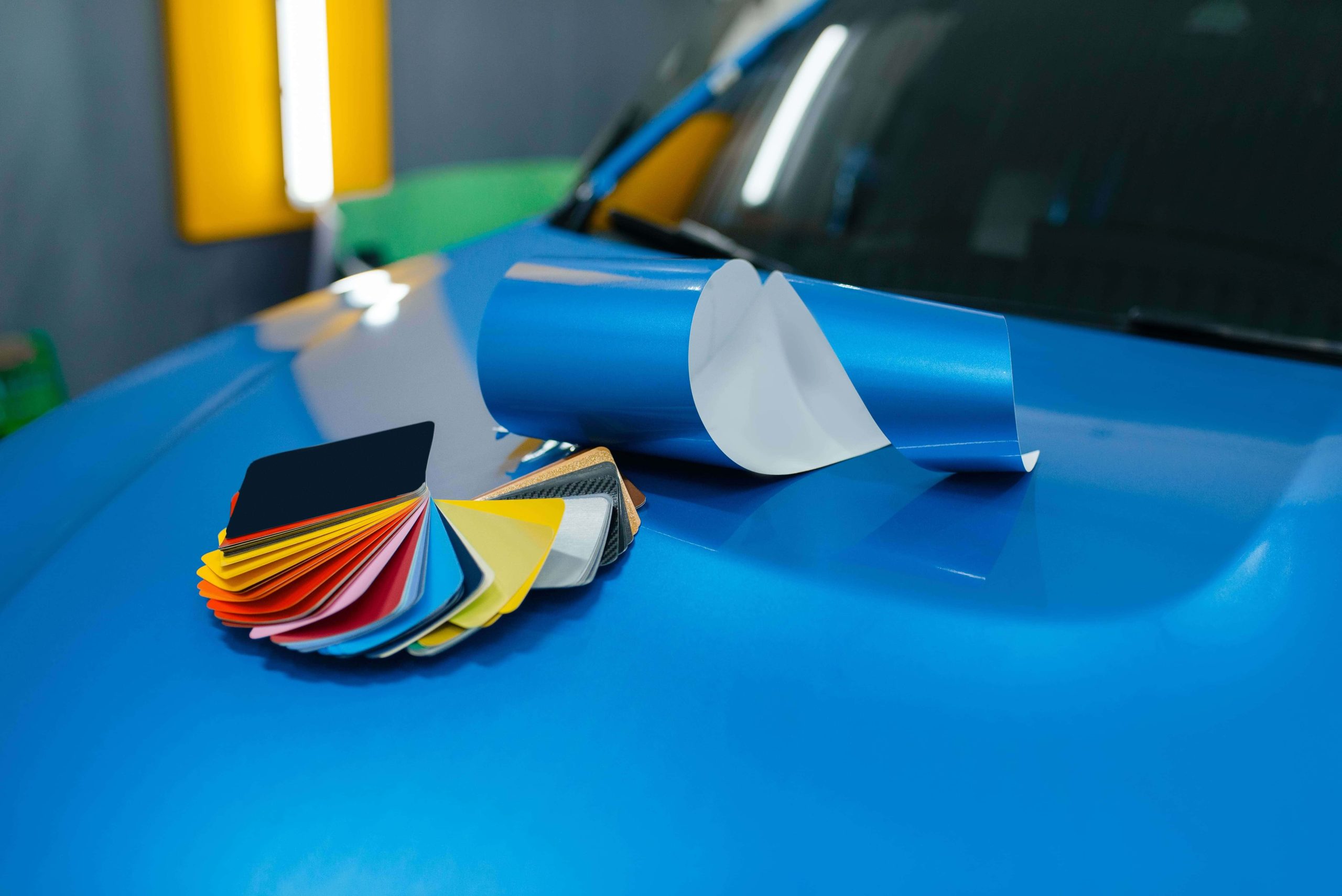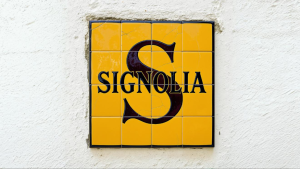
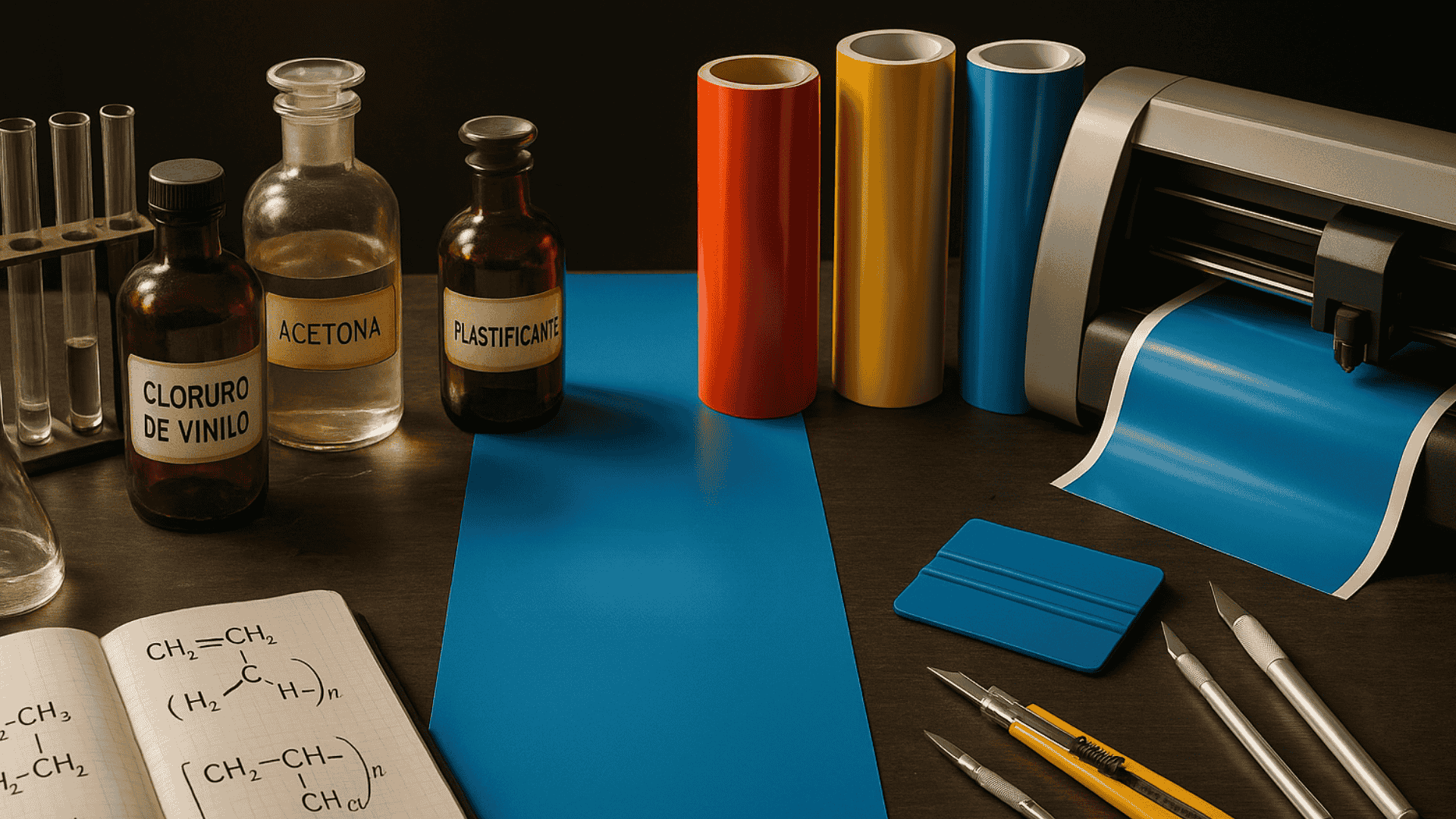

The History of Vinyl it is a journey that begins in the chemistry laboratories of the nineteenth century and ends in the streets, facades and vehicles that today capture our visual attention. This material, technically known as polyvinyl chloride (PVC), has gone from being a scientific discovery to an essential creative tool for designers, advertisers and sign makers. In this tour we will analyse its evolution, its pioneering applications and how it has established itself as the king of visual communication.
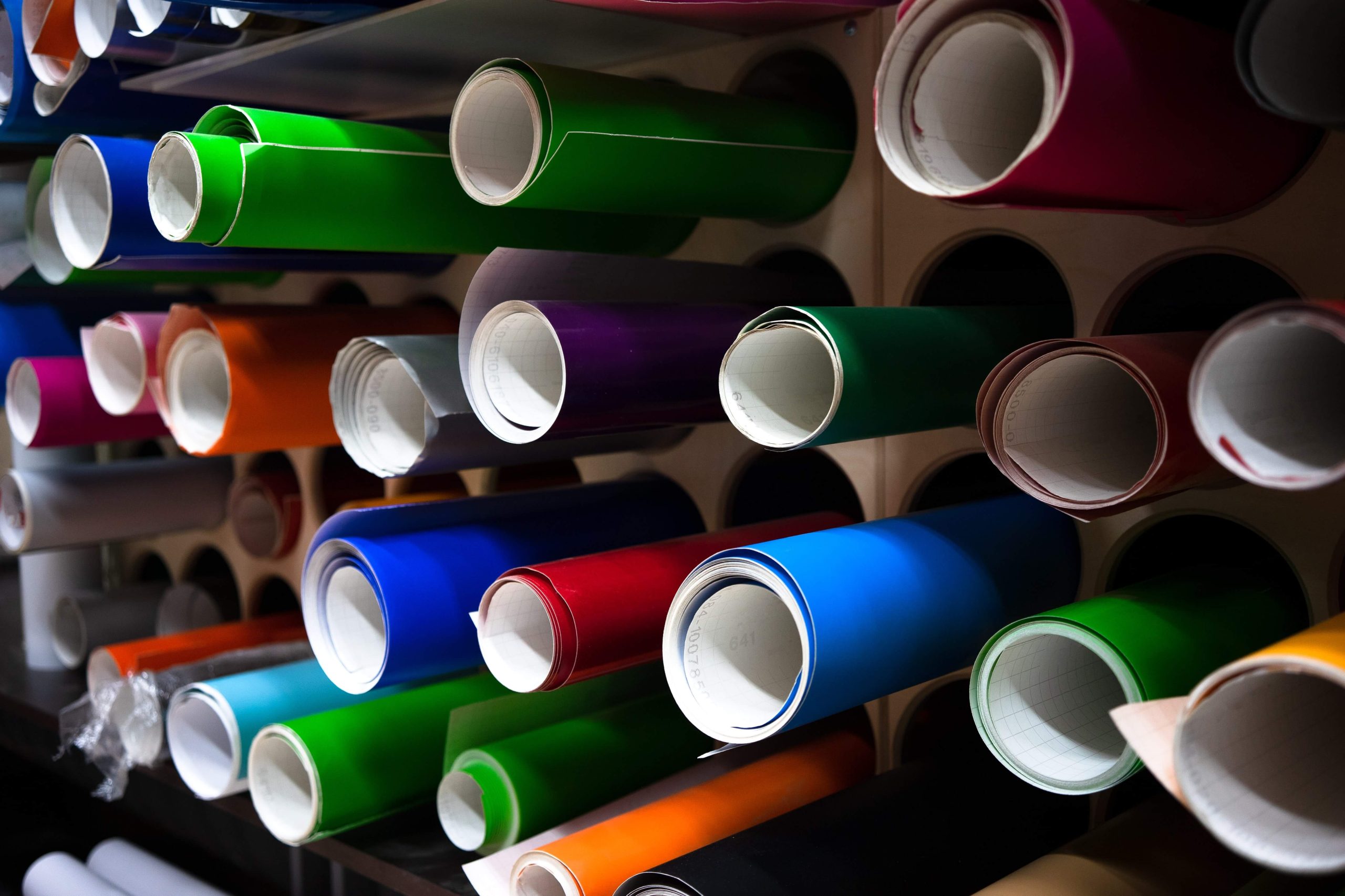
It all started in 1835, when French chemist Henri Victor Regnault discovered vinyl chloride, a compound that would later become the basis of PVC. But it was not until 1872 that the German Eugen Baumann managed to polymerize this compound, giving rise to the first solid vinyl material. In its original state, PVC was rigid and unwieldy, limiting its use. However, the big leap came in 1926 thanks to the chemist Waldo Semon, from the B.F. Goodrich company, who developed a plasticized version of PVC, giving it flexibility and opening the door to an infinite number of industrial and commercial applications.
Once plasticized, vinyl began to be used in everyday consumer items such as raincoats, shower curtains, electrical cables and coatings. Its resistance to water, chemicals, and electricity made it an ideal material for domestic and industrial environments. But his versatility didn't stop there. The most significant innovation was the incorporation of an adhesive layer on its back, which transformed it into a key resource for signage, allowing its direct application on multiple surfaces such as glass, metal or plastic.
The vinyl revolution in signage began in the 1960s, when self-adhesive vinyl was introduced. This advance made it possible to create signs and signs more quickly and cheaply than with traditional methods such as painting or engraving. In the 80s, the emergence of cutting plotters was a real transformation: thanks to these machines, personalized designs could be made with high-precision cuts, which boosted creativity in graphic and visual design. From this moment on, vinyl became an essential tool in shop windows, signage, trade fairs and any advertising medium.
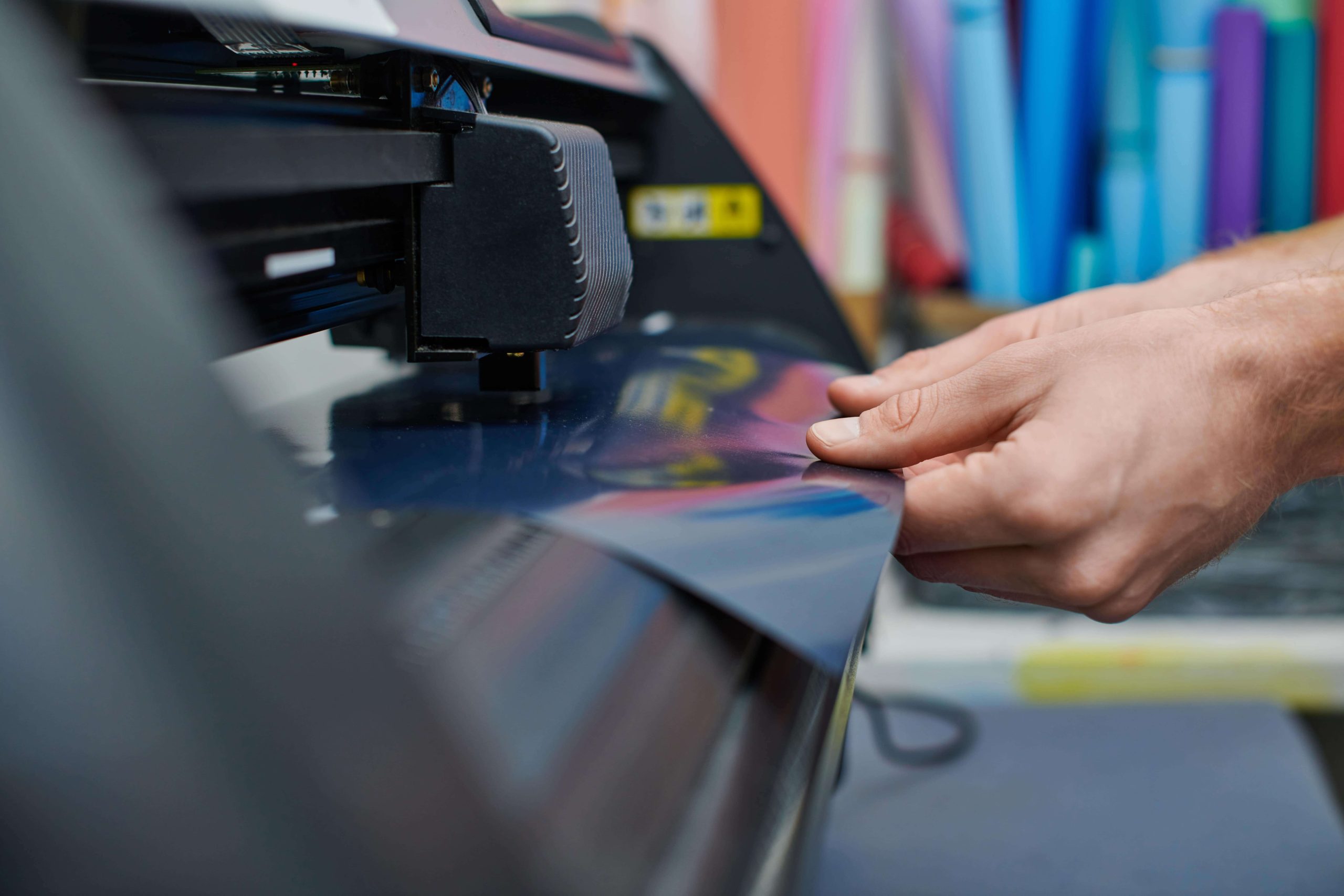
One of the areas where vinyl showed its full potential was in vehicle wrapping. In the mid-twentieth century it was already used in decorative decals for airplanes and cars, but it was in 1993 when PepsiCo took this technique to another level, making the first complete photorealistic lettering of a bus. This milestone marked a before and after in mobile outdoor advertising, allowing any vehicle to be transformed into an impactful and personalized advertising platform.
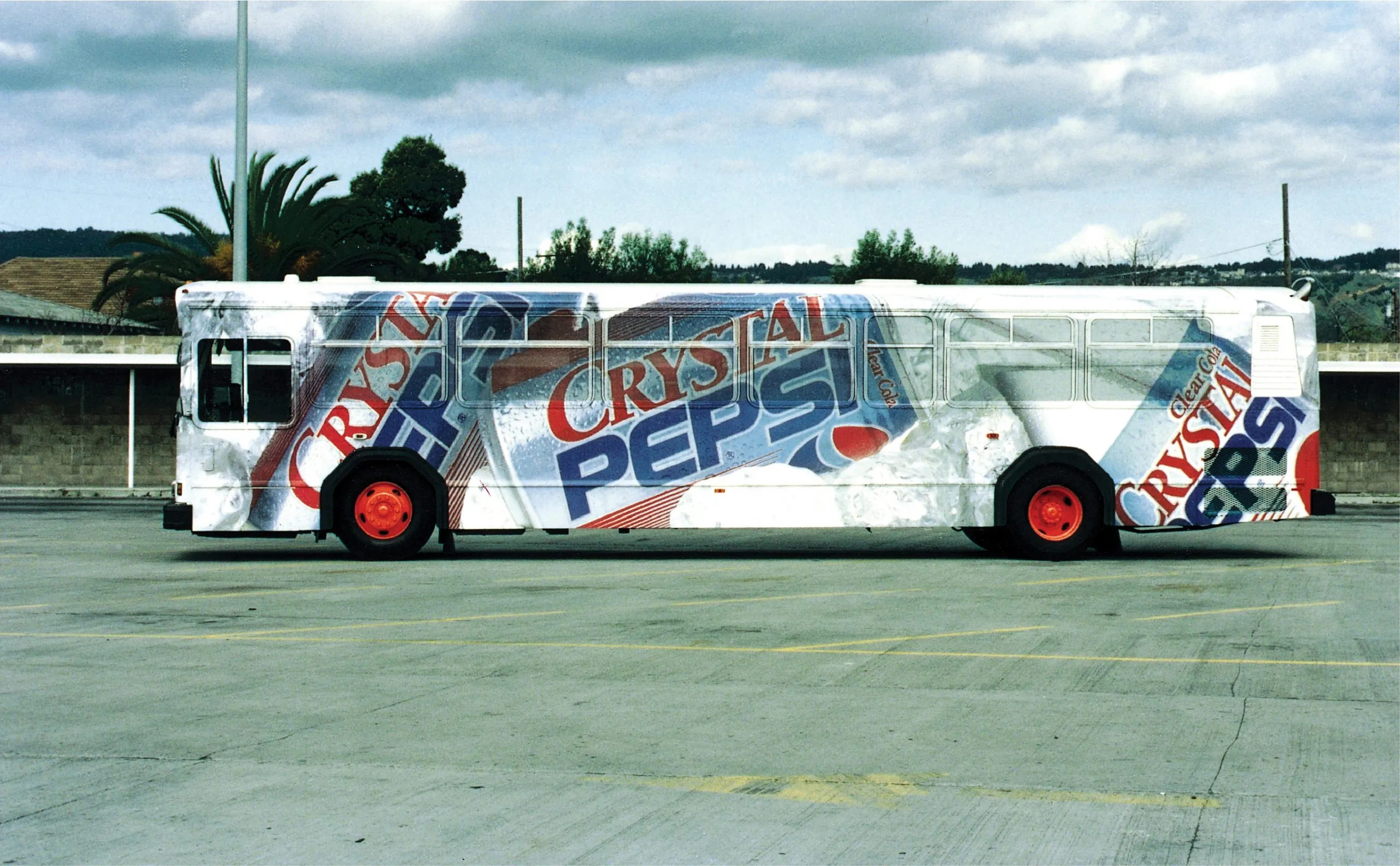
Although today we associate the word "vinyl" with signage, its fame began on record players. Vinyl records, introduced in the 1940s, offered a more durable and better sound-quality alternative to their shellac predecessors. This musical use popularized its name, although its application goes much further.
In addition, PVC is known for its eco-friendly versatility: it can be recycled and reused in creative ways, from decoration to furniture. In signage, it has been used to cover entire facades, showing its ability to adapt to surfaces of great complexity.
The History of Vinyl demonstrates how science can open up unsuspected paths to creativity and functionality. From its birth in the laboratories of the nineteenth century to its omnipresence in our streets and homes, vinyl has been able to adapt to each era and need. Whether in the form of a disc, covering, or advertising sign, his legacy is a shining example of technological and aesthetic evolution.
